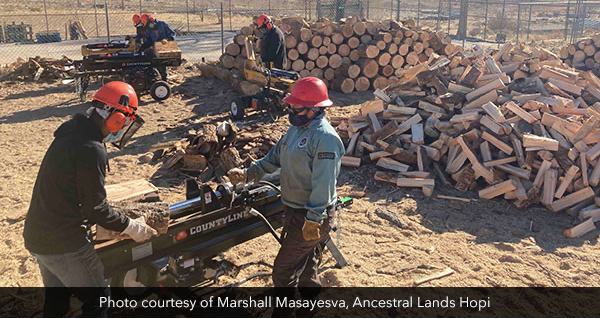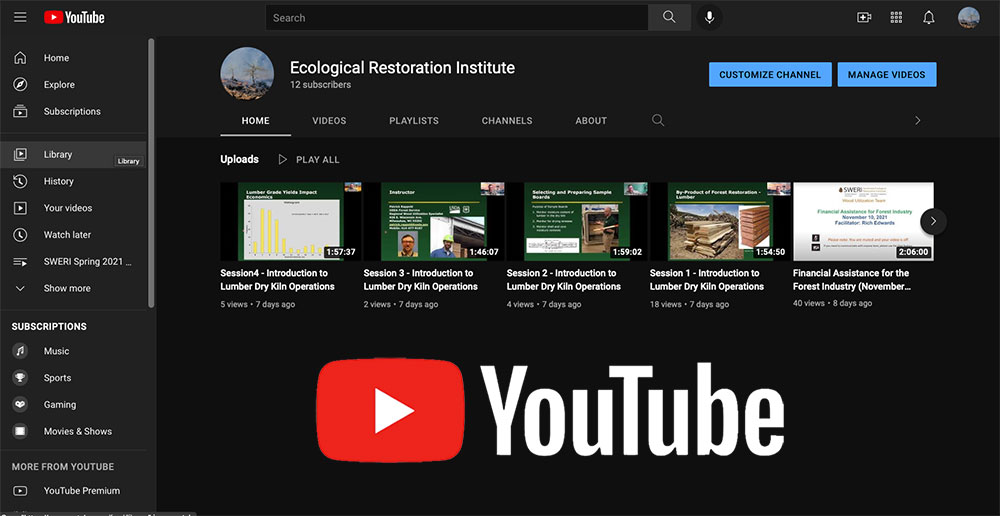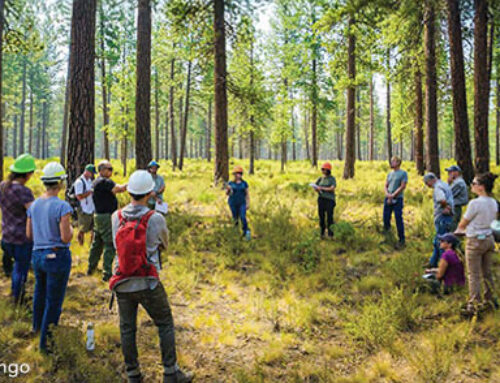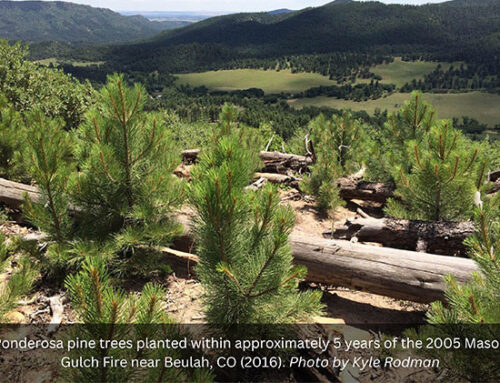In Arizona and New Mexico, there are 10 million acres of tribal forested land. Across the US, tribes share thousands of miles of forested boundaries with federal land management agencies. For example, tribes share approximately 2,100 miles of boundary with the Forest Service. Increasingly, wildfires and other disturbances such as insect and disease outbreaks are spreading from federally managed lands to tribal lands, putting tribal forest assets at risk.
In response, recent federal legislative directions present new opportunities for federally recognized tribes to manage their own forest resources and share forest management stewardship on adjacent federal lands. Tribes can now assume management of their forest resources from the Bureau of Indian Affairs; propose treatments on adjacent federal lands; and enter into “638 agreements” — also known as self-determination agreements — with the Forest Service to implement treatments under the Tribal Forest Protection Act of 2004.
A new white paper written by Jonathan Martin, director of ERI’s Native American Forests and Rangeland Management Program, examines these new legislative actions and their implications for tribal forest management. It details relevant federal and tribal forest management history and policies and explains how to identify, plan for, and implement cross-boundary restoration treatments on tribal and federal agency lands.
Forest resources are critical to tribes’ sustainability and provide economic, cultural, historical, and ecological benefits for tribes and tribal members. A greater understanding of legislative actions and associated authorities and regulations can facilitate collaboration between tribes and federal land management agencies and lead to healthier forest conditions for the benefit of tribal and non-tribal communities.
Subscribe to Our YouTube Page
We are updating the ERI YouTube page with new videos from our spring wood innovation conference and climate adaptation workshop.
See our playlist page to subscribe and browse more videos.





